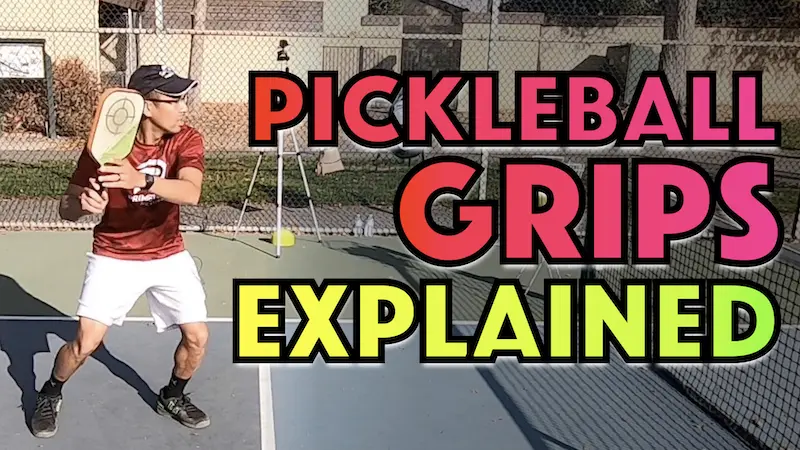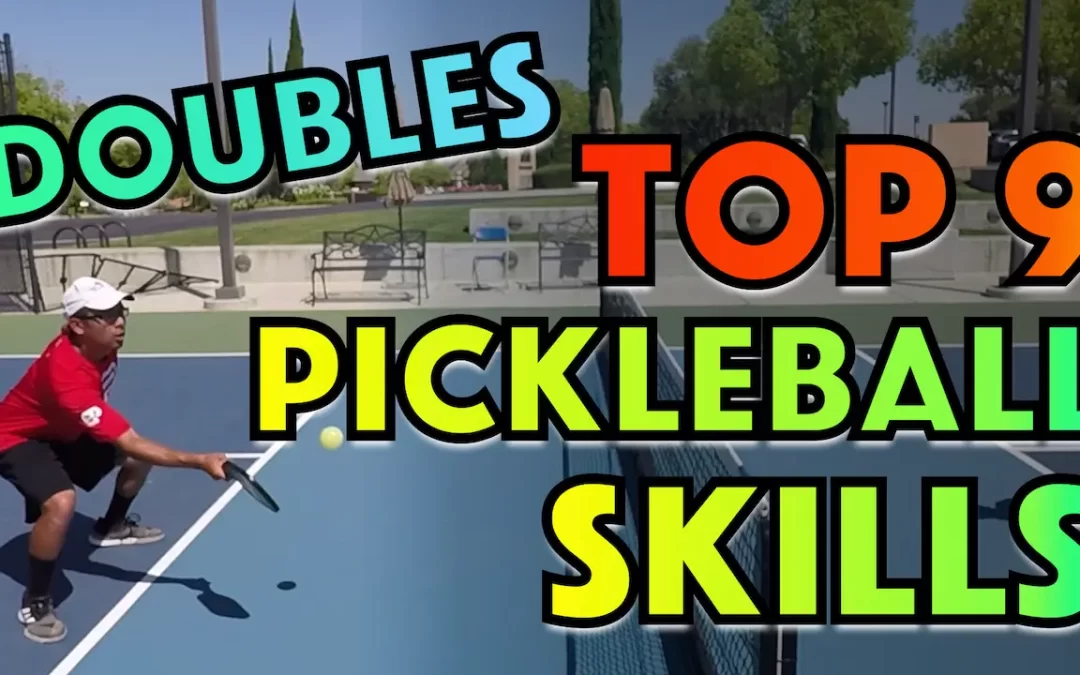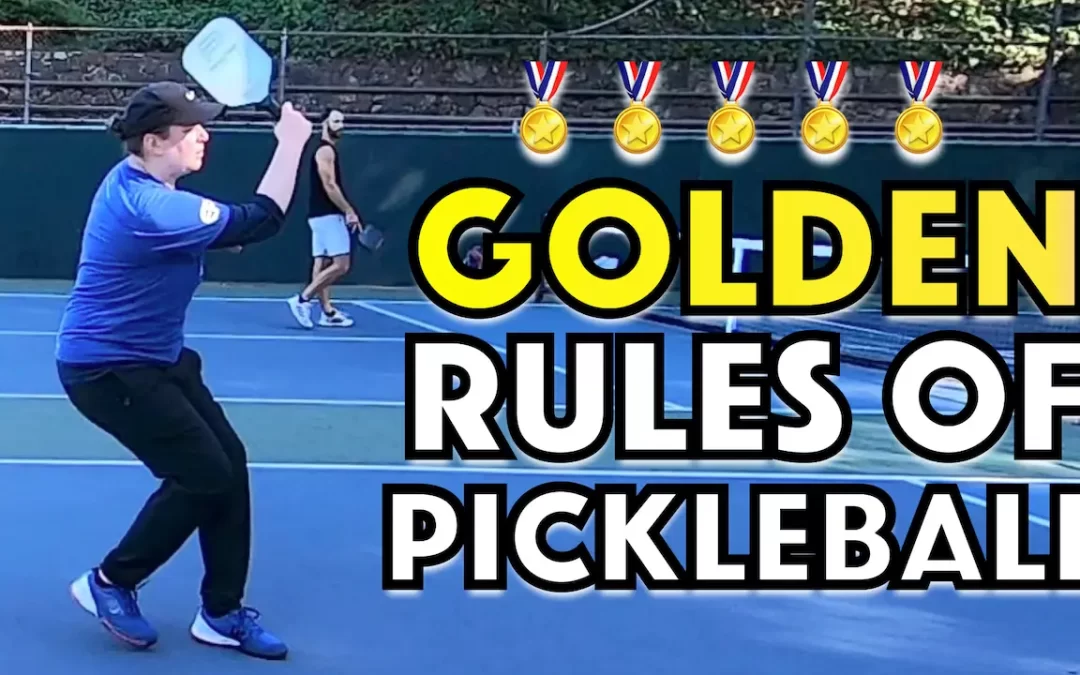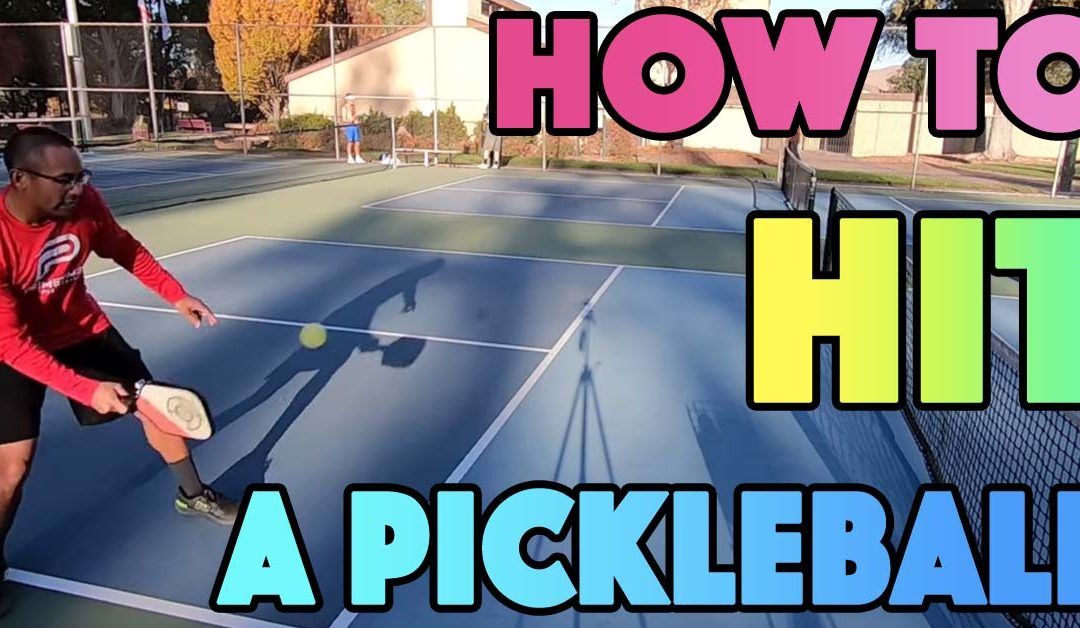There’s a new dink in town…
When we talk about pickleball dinks. We mostly are talking about a shot hit from up at the NVZ line that is basically just pushed over the net in a gentle arc with not much spin into the opposing kitchen.
Or maybe it has a little backspin on it to help keep it lower.
A standard dink is hit with an open paddle face and very little swing (if you’re doing it right) and you just kinda bump it over the net.
The purpose is to make it unattackable and keep the rally going, wait for that ball to accidentally lift a little too high and then it’s go time.
BANG, BANG… point over!
What we’re seeing more and more, especially in tournament play, is that players are doing more with their dinks.
The idea is not only to make it unattackable but you are also actively trying to generate that accidental error from your opponent that puts them in a situation where they are more likely to lift that ball just a little too high which puts your team in a position to attack.
One strategy that we’re seeing deployed more and more in order to accomplish this is that players are putting some topspin on their dinks.
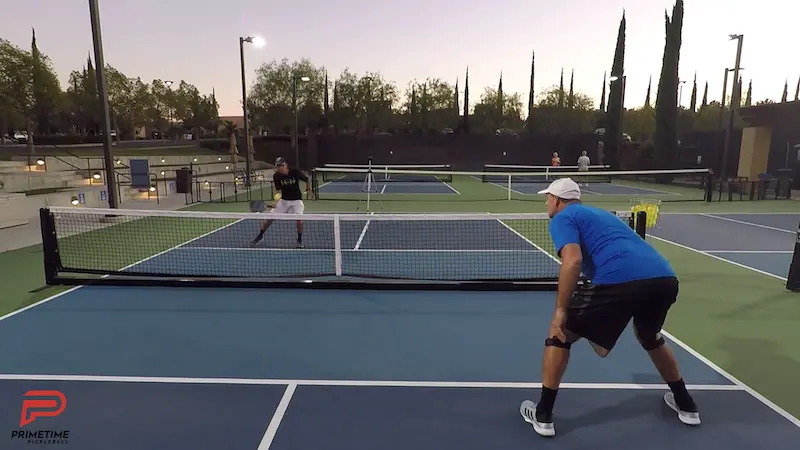
It’s called The Dink Dip. (You heard it hear first! PrimeTime Pickleball is coining the name/term Dink Dip, and 3rd Shot Dip, but that one’s for a different blog post 😉 )
So what is the Dink Dip (topspin dink) and why would you hit a topspin dink instead of a flat (no spin) or backspin dink and why is this more likely to generate a weak response from the opponent that has a greater chance of being an attackable shot for you?
A dink with topspin can still be hit with safe net clearance and can be hit in such a way that immediately after it crosses the net, it starts to dip down into the court at a faster rate than a flat or backspin dink would.
Additionally, when a ball with topspin hits the ground, it will actually speed up a bit and jump towards the player if hit directly at them or bounce more quickly away from a player if hit more away for them.
As a result, an opponent receiving a topspin dink is more likely to get jammed up, rushed or have to reach and make contact outside their comfort zone.
It will be much harder for an opponent to hit a clean response when receiving a topspin dink. Off paddle center hits will increase.
All these factors spell trouble for your opponent and they will very likely pop a lot more of these up for you to attack than a standard dink.
So start getting more aggressive with your dinks and add the topspin dink (Dink Dip!) to your arsenal of shots.
Let’s see what Jordan has to say in the video at the top of this page and in the pointers below…
This is more an advanced shot but it’s a very effective shot which is very hard to deal with as the opposing player/team.
Let’s say we’re dinking from side to side going cross-court. Most of my dinks are going in a low to high motion. My paddle face is facing up in a regular dink.
I have my friend Danny with me and we’re going to practice some regular cross-court dinking. The dinks we’re hitting at the moment are pretty flat with not that much spin.
I’m clearing the net and trying to make the ball land in to the non-volley zone.
I could also hit it with a little bit of underspin. But, what I should really try to do is put some topspin on it as it could be very offensive and it could be a hard shot for my opponent to defend.
When I hit a topspin I want to brush up on the ball and come across my body on the swing path. All the while going low to high. This will put a little more action on the ball.
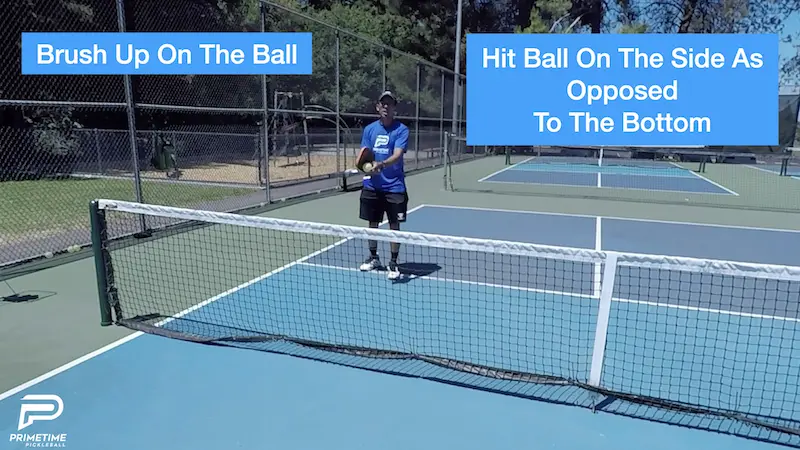
As the ball hits the ground it’s going to jump or skid a little bit.
Instead of hitting with an open paddle face I’m going to hit the ball a bit more on the side at a bit of an angle.
I’m trying to get more of the side of the ball as as opposed to the bottom.
This topspin dink is a more aggressive and it can cause a lot of problems for people as opposed to just a flat dink.
Try it out! Go out there with a partner and try to put some topspin on the ball and you’ll see that it’s going to make it a lot harder for your opponent to attack the ball.
Get our free 3rd shot course here! –> 3rd Shot Drop Course


